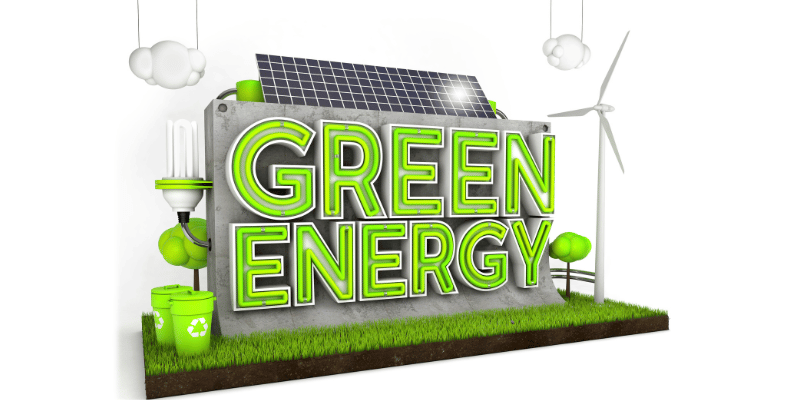
As the world struggle with the urgent need to combat climate change and reduce our reliance on fossil fuels, the search for the best green energy resources has intensified.
Green energies are considered as a crucial part of sustainable and environmentally friendly energy system.
It plays an important role in addressing environmental issues, reducing greenhouse gas emissions and decreasing over dependency on limited fossil fuel resources like oil, coal and natural gas.
Climate change and global warming motivates the adoption of green or renewable energy resources.
Table of Contents
Introduction
What is Green energy?
Green energy also known as clean energy or sustainable energy or renewable energy. It is refers to energy sources, practices, and technologies that have a minimal impact on the environment and reduce the emission of greenhouse gases and other pollutants.
Green energy is considered more environmentally friendly and sustainable compared to traditional fossil fuels like coal, oil, and natural gas, which are major contributors to climate change and air pollution.
Example of Green Energy
Green energy is crucial for a sustainable and resilient future, offering environmental, economic, and social benefits while mitigating the impacts of climate change and reducing our reliance on finite resources.
These types of green energy resources are different from non-green energy resources like oil, coal, and natural gas. Some examples of the best green energy resources are:
• Solar Energy
• Wind energy
• Hydropower Energy
• Biomass Energy
• Geothermal energy
• Ocean Energy
Types of Green Energy
Solar Energy
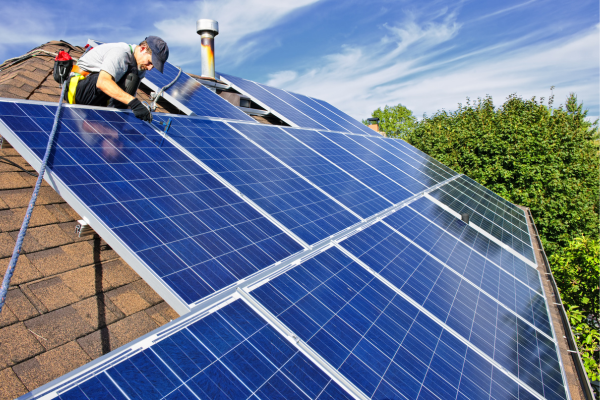
Solar energy is widely recognized as one of the best green energy resources available today. It is a prominent and rapidly growing source of green energy that harnesses the power of the sun to generate electricity and heat.
It has gained significant attention and adoption due to its many advantages, including sustainability, environmental benefits and its potential to reduce reliance on fossil fuels.
Wind Energy
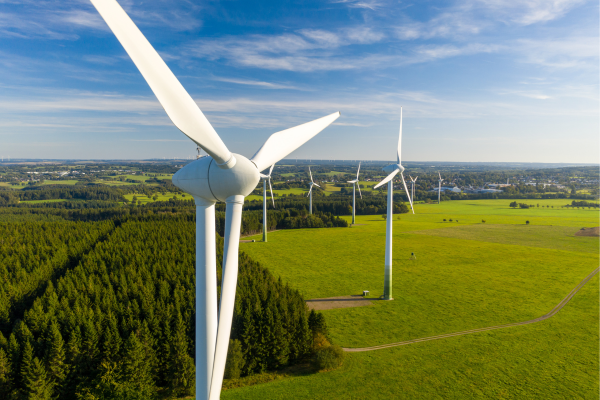
Wind energy is another important and rapidly growing source of green energy that harnesses the power of the wind to generate electricity.
Wind energy is considered a clean and sustainable source of power, as it produces no greenhouse gas emissions and relies on an abundant and naturally occurring resource such the wind.
Hydropower (Hydroelectric Power) Energy

Hydropower, also known as hydroelectric power. It is one of the oldest and best green energy resource. It involves the conversion of energy from flowing water, typically from rivers, dams or other water bodies.
Biomass Energy
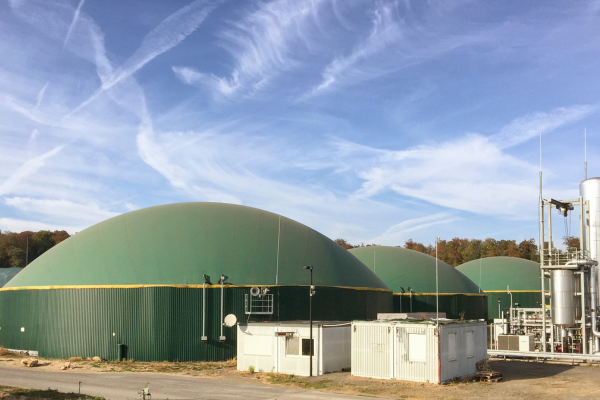
Biomass energy is a green energy resource that involves the use of organic materials, such as plants, wood, agricultural residues and waste to produce heat, electricity and biofuels through processes like combustion, gasification or anaerobic digestion.
Geothermal Energy
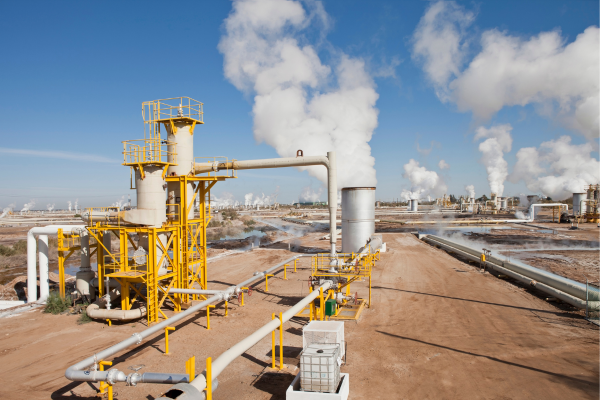
Geothermal energy is a green and sustainable source of power that harnesses the heat stored beneath the Earth’s surface to generate electricity or to provide direct heating.
This heat originates from the natural radioactive decay of elements within the Earth and the original heat from the planet’s formation.
Ocean Energy
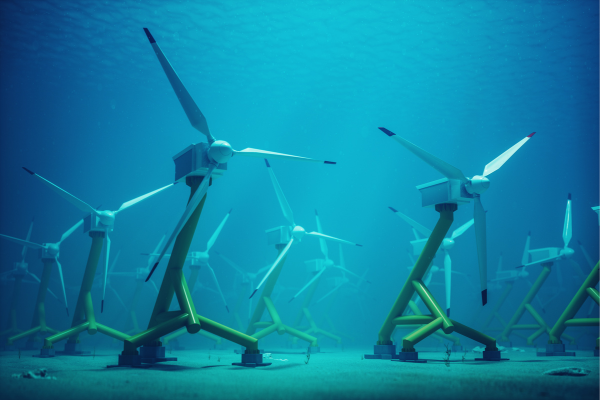
Ocean energy, also known as marine energy. It harness the power of the ocean’s movements and temperature gradients to generate electricity.
These renewable energy sources utilize the kinetic energy of moving water, the temperature differences between surface and deep waters and the gravitational pull of the moon (tides) to generate electricity or other forms of energy.
Green energy resources, including solar power, wind power, hydropower, geothermal energy, biomass energy and tidal and wave energy, offer viable alternatives to fossil fuels.
As we accept these best green energy resources, we are not just investing in the future but actively shaping it. Together, we can power a more sustainable and environmentally responsible world, one energy source at a time.
Benefits of Green Energy
Environmental Benefits
Utilizing green energy resources are key strategy for achieving significant environmental benefits. Here are several environmental benefits that can address many environmental challenges.
1. Reduced Greenhouse Gas Emissions: Green energy resources produce little or no greenhouse gas emissions during electricity generation.
This significantly reduces the carbon footprint, mitigating climate change and decreasing the concentration of greenhouse gases in the atmosphere.
2. Air Quality Improvement: Shifting to green energy helps to reduce the emission of harmful pollutants, such as sulfur dioxide, nitrogen oxides and particulate matter, which are associated with respiratory and cardiovascular diseases.
Clean air quality leads to improve public health and reduced healthcare costs.
3. Water Conservation: Unlike many traditional power plants that require significant amount of water for cooling, most green energy technologies use little or no water for operation.
This is particularly important in water-scarce regions, where water conservation is important.
4. Minimized Land and Ecological Impact: Green energy installations, such as solar panels and wind turbines, can often be integrated into existing land use, minimizing their environmental footprint.
Additionally, well-planned green projects can have lower ecological impact compared to large-scale fossil fuel extraction.
5. Biodiversity Protection: Reducing dependence on fossil fuels can help protect ecosystems and biodiversity. Extracting and burning fossil fuels can disrupt habitats and harm wildlife.
6. Reduced Noise Pollution: Many green energy systems, such as solar panels and wind turbines, operate quietly, reducing noise pollution in the surrounding areas.
7. Decreased Soil Contamination: Biomass energy from organic materials often involves agricultural or forestry residues, which can be used to reduce soil contamination.
8. Lower Environmental Risks: Clean energy technologies generally pose fewer environmental risks compared to fossil fuel extraction and transportation.
For example, they are less susceptible to oil spills or the release of hazardous materials.
9. Resource Sustainability: Fossil fuels are limited resources that will eventually be exhausted, leading to resource scarcity and geopolitical conflicts.
Green energy resources, on the other hand, rely on continuously replenishing resources, ensuring long-term sustainability.
Economic Benefits
Investing in green energy resources holds the promise of significant economic benefits and ROI.
Green energy offers a variety of economic benefits, both at the macroeconomic and microeconomic levels. These benefits contribute to economic growth, job creation and increased energy security.
1. Job Creation: The Green energy sector is a significant source of employment. It creates jobs in various stages, including manufacturing, installation, operation, maintenance and research and development.
2. Economic Growth: Investment in green energy projects stimulates economic growth by increasing economic activity and tax revenue.
It can attract investment in the form of infrastructure development, manufacturing and related industries.
3. Reduced Energy Costs: Over the long term, green energy can lead to reduced energy costs for consumers. Solar panels and wind turbines, once installed, have low operating and maintenance costs and their energy sources are free.
4. Energy Independence: By harnessing locally available green resources, communities and nations can reduce their dependence on imported fossil fuels, which can be susceptible to price fluctuations and supply disruptions.
5. Export Opportunities: Countries with strong green energy sectors can export clean energy technologies and expertise to other nations. This can generate additional revenue and create jobs in the export industry.
6. Stable Energy Prices: Green energy can provide more stable and predictable energy prices over time, reducing the volatility often associated with fossil fuel markets. This stability can benefit industries and consumers alike
7. Enhanced Property Values: Properties with green energy installations, such as solar panels, often see an increase in value.
This can benefit homeowners and communities by creating wealth and increasing property tax revenue.
8. Agricultural Benefits: Biomass energy and biofuels can provide new revenue streams for farmers by using agricultural and forestry residues as feedstock.
This can help stabilize rural economies and improve the financial well-being of farmers.
9. Grid Resilience: Distributed green energy sources, such as rooftop solar panels and small-scale wind turbines, can enhance grid resilience by reducing strain on centralized power generation and distribution infrastructure.
Challenges for Green Energy Resources
Green energy has made significant progress, but it still faces several challenges and barriers that impact its widespread adoption.
1. Intermittency and Variability
Challenge: Best green energy resources, such as wind and solar are intermittent and variable depending on weather conditions. This can make it challenging to ensure a constant and reliable energy supply.
Solution: To address this, advancements in energy storage systems, grid integration and demand-side management are crucial.
Energy storage technologies, like batteries, help store excess energy for use during low-generation periods. Grid operators are also improving their ability to manage variable sources efficiently.
2. Energy Storage
Challenge: While energy storage technology is advancing, it can be costly and may have limitations in terms of scalability and energy density.
Solution: Continued research and development in energy storage, including improved battery technologies, grid-scale storage and innovative solutions like compressed air energy storage and pumped hydro, are needed to address these challenges.
3. Infrastructure Requirements
Challenge: Building the necessary infrastructure for green energy generation and distribution can be expensive and require significant planning and investment.
Solution: Governments, utilities and private sectors should collaborate to fund and develop the infrastructure needed to support green energy deployment, including transmission lines, smart grids and electric vehicle charging networks.
4. Resistance from Fossil Fuel Industries
Challenge: Fossil fuel industries may resist the transition to green energy, as it can threaten their existing business models.
Solution: Policymakers, businesses and advocacy groups need to work together to create a supportive regulatory environment and economic incentives for the transition to clean energy.
Transition plans that include retraining and reskilling workers from fossil fuel industries can also help ease the transition.
5. Initial Costs and Financing
Challenge: The upfront costs of green energy technologies, such as solar panels and wind turbines, can be high, which can deter adoption, especially in lower-income communities.
Solution: Incentive programs, tax credits and financing options can make green energy more affordable for consumers and businesses. As technology matures, costs tend to decrease, making green energy more competitive.
6. Land and Resource Constraints
Challenge: Some green energy projects require vast amounts of land and specific natural resources, which can be limiting.
Solution: Innovations, such as floating solar panels, can address land constraints. Additionally, research into resource-efficient technologies and practices is essential to minimize the environmental footprint.
7. Grid Integration and Transmission
Challenge: Integrating green energy into existing electrical grids can be complex and costly. The grid may also need to be upgraded to accommodate variable sources.
Solution: Continued investment in grid infrastructure, smart grid technologies and grid management systems is needed to ensure smooth integration of green energy.
This includes expanding and reinforcing transmission lines to connect remote green resources to demand centers.
8. Policy and Regulatory Barriers
Challenge: Inconsistent or unfavorable policies, regulations and permitting processes can create uncertainty and hinder green energy deployment.
Solution: Clear and supportive policy frameworks, including incentives, green portfolio standards, and feed-in tariffs, can encourage investment in green energy. Policymakers need to collaborate at the local, regional, and national levels to create a favorable environment.
9. Public Perception and NIMBY (Not In My Backyard) Opposition
Challenge: Local opposition can hinder the development of green energy projects due to concerns about visual impacts, noise or other perceived drawbacks.
Solution: Outreach and education are essential to address these concerns. Engaging communities and involving stakeholders in the project planning and decision-making process can help gain local support.
Successful Green Energy Projects in India
India has made significant strides in the green energy sector and has several successful projects that demonstrate the country’s commitment to clean energy. It is essential to refer the latest data and reports of clean energy from energy organizations or government agencies.
1. Kurnool Ultra Mega Solar Park, Andhra Pradesh
Type: Solar Power
Capacity: 1,000 MW
Highlights: The Kurnool Ultra Mega Solar Park is one of the world’s largest solar
parks and a testament to India’s commitment to solar energy.
It covers approximately 5,932 acres and generates clean energy to power around 700,000 homes.The project was commissioned by the Andhra Pradesh Solar Power
Corporation Private Limited.
2. Bhadla Solar Park, Rajasthan
Type: Solar Power
Capacity: 2,245 MW
Highlights: Bhadla Solar Park is one of the largest solar installations in India, located in the state of Rajasthan. It consists of several phases and contributes to India’s ambitious green energy goals. This park has attracted significant investment and has helped India increase its solar power capacity.
3. Muppandal Wind Farm, Tamil Nadu
Type: Wind Power
Capacity: Over 1,500 MW
Highlights: The Muppandal Wind Farm in Tamil Nadu is one of the largest onshore wind farms in India. It has been operational for decades and continues to expand.
The consistent wind patterns in this region make it an ideal location for wind power generation
4. Ladakh Renewable Energy Initiative, Jammu and Kashmir
Type: Solar and Wind Power
Capacity: Varied
Highlights: The Ladakh Renewable Energy Initiative aims to make the region of Ladakh a hub for renewable energy or green energy. The high altitude, clear skies, and abundant sunlight make it an excellent location for solar energy. The project also explores wind power potential in the region. It’s part of the effort to bring clean energy to remote and challenging terrains.
5. Charanka Solar Park, Gujarat
Type: Solar Power
Capacity: Over 790 MW
Highlights: Charanka Solar Park is one of the largest solar parks in Gujarat.
It comprises numerous solar projects and has helped Gujarat become a leader in solar energy generation.
These projects highlight India’s commitment to green energy and its efforts to address energy security, reduce greenhouse gas emissions and provide clean and sustainable power to its growing population.
Technological Advancement
Here are some examples of technological advancements and innovations in green energy:
1. Solar Panel Efficiency Improvements
Tandem Solar Cells: Tandem solar cells, also known as multi-junction cells, have been developed to boost solar panel efficiency.
They stack multiple layers of photovoltaic materials to capture a broader range of sunlight, increasing energy conversion efficiency.
Perovskite Solar Cells: Perovskite solar cells have gained attention for their potential to be highly efficient and cost-effective.
Research in this area has focused on improving the stability and scalability of perovskite-based solar panels.
2. Energy Storage Solutions
Advancements in Battery Technology: Lithium-ion battery technology continues to advance, with improvements in energy density, lifespan and cost reduction.
Solid-state batteries have shown promise for safer and more efficient energy storage.
Flow Batteries: Flow batteries, such as vanadium redox flow batteries, offer the advantage of scalability and longer cycle life.
Research and development have focused on making these systems more cost-effective.
Hydrogen Energy Storage: Hydrogen storage solutions, including hydrogen fuel cells, have gained attention as a means to store excess green energy and provide grid flexibility.
3. Smart Grid Technologies
Advanced Grid Management Systems: Grid operators are incorporating advanced technologies, such as machine learning and artificial intelligence, to better manage the integration of green energy resources, optimize grid operations and enhance grid resilience.
Distributed Energy Resources (DERs): Smart grids are becoming more capable of managing the integration of distributed energy resources, such as rooftop solar panels, small wind turbines and electric vehicle charging stations.
4. Wind Energy Innovations
Bigger and More Efficient Turbines: Wind turbine technology has continued to evolve with larger, more efficient turbines that capture more energy at lower wind speeds.
Floating Wind Farms: Floating wind farms, which can be deployed in deeper waters, are being developed, expanding the potential for offshore wind energy.
5. Geothermal Innovations
Enhanced Geothermal Systems (EGS): Researchers are working on developing EGS technology, which involves creating artificial geothermal reservoirs by fracturing hot rocks deep underground, expanding the reach of geothermal energy to regions with less naturally occurring geothermal resources.
6. Ocean Energy Technologies
Wave and Tidal Energy: Advancements in wave and tidal energy technologies are making these sources more reliable and cost-effective, including oscillating water columns and underwater turbines.
7. Biogas and Biofuels
Advanced Biofuel Production: Research into advanced biofuels, such as algae-based biofuels and cellulosic ethanol, continues to improve the efficiency and sustainability of biofuel production.
Frequently Asked Questions
Renewable energy refers to energy that is derived from resources that are naturally replenished on a human timescale and are considered sustainable over the long term. These resources are essentially inexhaustible and do not deplete when used.
Green energy provide many benefits including; climate change mitigation, energy security, clean air and water, sustainable development, resource longevity and resilience.
Well-known green energy resources are solar, wind, hydropower, biomass, geothermal and ocean energy. While there are a few lesser-known or emerging green energy resources which are Piezoelectric Energy, Thermal Energy from Concentrated Solar Power (CSP), Salinity Gradient Power, Piezoelectric and Electromagnetic Ocean Energy, Algal Biofuel and Urban Wind Turbines.

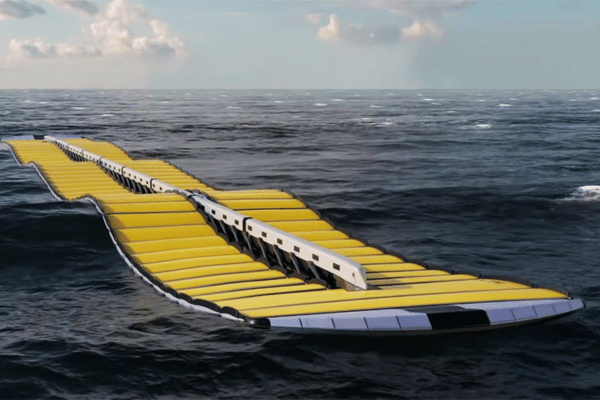
Pingback: Understanding of Climate Change